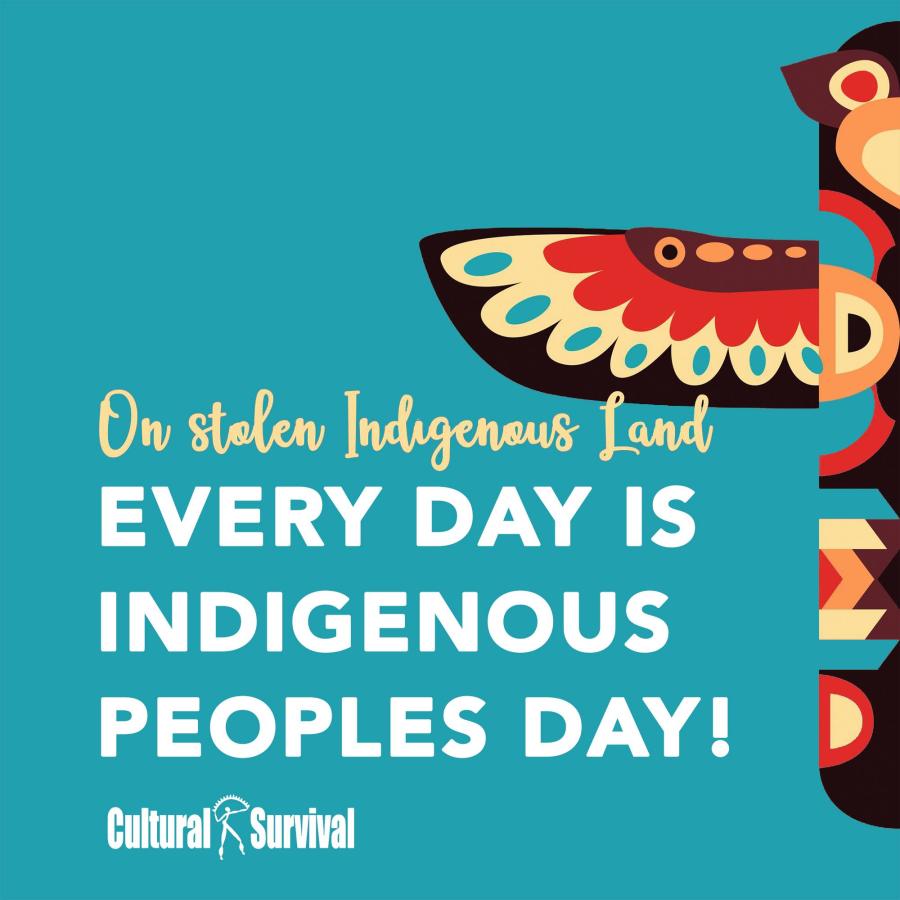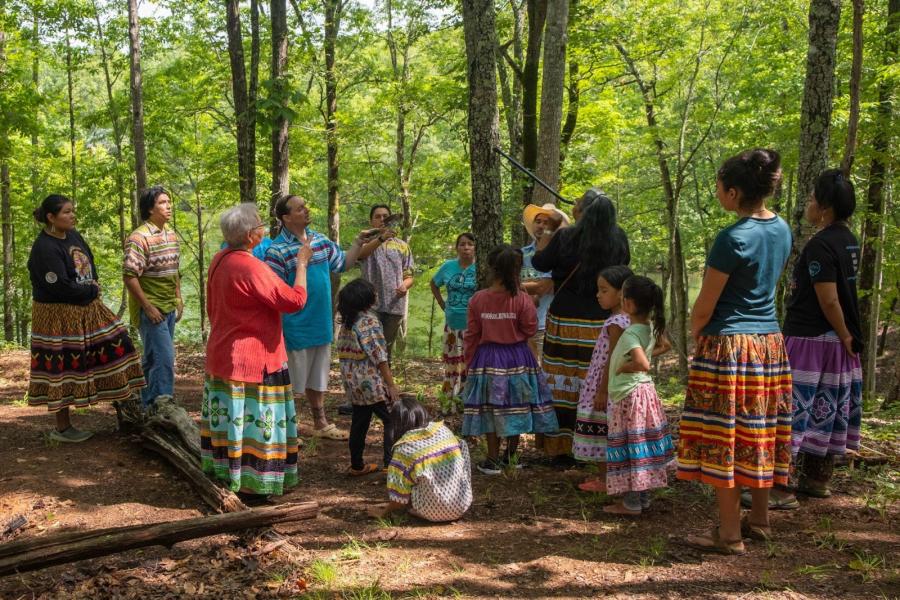Tonight, the drum beat propels stories written in colors. Sage-smudged murals speak. In the halls, young women walk past carrying harvested dark Arbol chili varieties and Yerba Buena, while garden beds outside host a conversation entirely in Lakota dialect. On the brick façade of this East Oakland building is a sign that reads, “Intertribal Friendship House.”
Within these walls, dubbed the “Urban Rez” of California, you will find the second home of one of the largest urban Native American populations in the United States. Established in 1955 as one of the first urban American Indian centers in the nation, it has served the community to address issues facing the challenges of relocation. It has continually provided a space for ceremony, struggle, and organization.
Once again, the community that was at the epicenter of such landmarks of consciousness-raising as the occupation of Alcatraz Island, the Longest Walk, and the American Indian Movement for Freedom Survival School continues to lead in the tradition of social changes for the benefit of Indian people. This time, Bay Area Native folk are at the cornerstone of a growing inner-city food justice movement that opposes, like many other Indigenous communities, the predatory nature of genetically modified or unhealthy processed foods and lack of access to alternatives.
It is contradictory that in the San Francisco Bay Area—a food-lover’s paradise where the “Gourmet Ghetto” food district flourishes, the Slow Food legacy is alive and well, and the bounty of local farmers’ markets are world-renowned—you simultaneously find Indigenous people who are isolated and often denied their Native food ways. Even within a culturally tolerant and ethnically diverse region such as the Bay Area, the Native community most often remains invisible. Also, despite the presence of many state-of-the-art health institutions and providers, health disparities within the community remain chronic and severe.
In response to all of these contradictions, Native people here are reclaiming traditional food ways and practices as a steadfast priority. With an ally in Seva Intertribal Foundation, the Friendship House is engaging people as diverse as Indigenous community leaders and the Northern California Chapter of the Society of Public Health Educators. Everyone is lending their hands in sowing seeds and ensuring the future of a sovereign, thriving food system that will be the sustenance of healthy Native people.
This latest justice movement starts with something as simple as a 700-square-foot garden.
Janice Wright, a California Pomo elder, has been involved with the first raising of the beds and has consistently accompanied mothers to the Native Parenting and Gardening class. Sitting in front of a tall bushel of tomato vines, her eyes quietly motion to her hands with a smile. Leaning in, I see a ripe tomatillo in her open palm, and looking back at me she says, “This here brings us new life.” She later proudly remarks, “Out here we don’t use any insecticides or any of that on our plants…they’re all organic.”
Friendship House Executive Director Carol Wahpepah (Ojibwe) has noticed that the center’s new cooking and gardening programs have opened up dialogue among participants on the nutritional aspect of different foods available in the region. It also simply sparks an interest in vegetables generally. Carol recalls, with a smile, “I would see young people at first throwing out their salads. By the second week they were going up for seconds and thirds and even showing it off to me. I think that’s from working in the garden.” More than 700 community members participated in the Friendship House food activities in the first year, many of them youth.
It has also sparked a bigger push: “The IFH board has now adopted ‘no-salt’ and ‘no-sugar’ policies,” Carol explained. One mother described noticing changes in the frequent community meals, saying, “The mint was good when put in the water. We had mint tea, mint water, instead of sugar. It was really good.”
Today there are garden greens such as sea collards and kale supplementing meals made at home as well as in the dishes prepared for community events. There is a diverse array of 47 vegetables growing on the small grounds. Families—men, women, and children—are continually tilling their gardens where a cluster of red-pink rhubarb stalks is only a couple feet away from International Boulevard, leading away from mint and pines to a stretch of the San Antonio district in Oakland.
Christina Gonzalez (Pomo) is one such mother, and she related to me the importance of strengthening familial ties through the Native Gardening class she frequents: “We all get together, Native women and children, to learn. Last weekend we practiced keeping our children together so they can grow up and be the next generation. Because I grew up here, I want my children to be part of this community, too.”
There has been increasing Native participation in classes teaching canning and cooking traditional meals with locally grown food, and there is a special focus on women in the Parenting Circle: “The cooking class was for the girls so that they don’t go living on canned food.”
Medicinal plants like Hoopa tobacco sit in the herbal section of garden along with California sage, cedar, and various mint and lemon balm species that are used in ceremony, providing respite from detrimental outside forces. A two-week day camp saw young people learning to plant seeds in hand-painted take-home pots, harvesting vegetables, and learning about the Hopi blue and purple-speckled corn in the garden. There are now radishes, onions, kale, and leeks growing during our Bay Area winter and keeping people directly involved with our urban earth.
By providing the Native community a space for garden and health resources, Friendship House is now offering more opportunities to recover long-held preventative health methods in the urban environment and combat common diseases prevalent among Native Americans today. Together, we welcomed back the return of healthy foods—to us, it feels like an old friend that is coming back home.
Gilberto Daniel Rodriguez (Mexica/Nahuatl) is a program associate with the Native American Community Health Program of Seva Foundation. See www.seva.org/ifh for more information. This article is first of a three-part series from Seva’s program, spotlighting Indigenous communities in Alaska, South Dakota, and California as they recover ancestral food systems that promote self-reliance and prevent chronic disease such as diabetes.
Author’s note: this story is dedicated to Valerie Brown (1971–2010) who often came to the garden to plant alongside her children. Memories of her kindness and laughter are still present in her absence.



